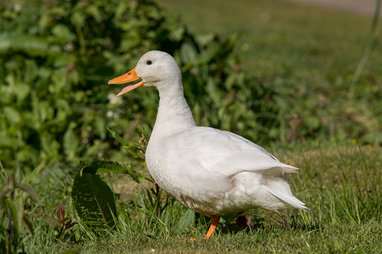Canadian and Mexican customers want more duck
By Diego Flammini
Assistant Editor, North American Content
Farms.com
Some duck farmers across Canada are increasing their production to meet the demands of local and international markets.
Earlier in March, it was announced that Mexico would reopen its border to Canadian poultry, including duck. That announcement has some producers increasing operations, partly because market access to Mexico can be worth up to $3 million annually.
In Quebec, Brome Lake, Canada’s oldest Pekin duck processor, is spending $30 million to convert a former beef processing plant into a duck processing facility.
The project could double the company’s production capacity to four million birds in about five years.

Pekin Duck
Getty
Claude Trottier, Brome Lake president, told The Canadian Press that duck is becoming more popular among younger generations.
Ontario’s King Cole Ducks is also targeting Mexico, in reaction to Brome Lake’s recent actions.
"If they double their production, we'll be looking for new markets," King Cole Ducks CEO Debbi Conzelmann told The Canadian Press. She added the demand for duck in Ontario is growing due to more immigrants from duck-eating countries like Russia and the Czech-Republic.
Conzelmann said global duck production is still dominated by China because Canadian producers are under stricter safety regulations and have higher production costs.
Additionally, countries like Hungary export their duck products to Canada and are labeled as Canadian products in retail stores. According to the CFIA, "a food product may use the claim "Product of Canada" when all or virtually all major ingredients, processing, and labour used to make the food product are Canadian."
Ken Falk, president of Fraser Valley Specialty Poultry in British Columbia, told The Canadian Press that Canada has become a “dumping ground” and the government has yet to take action.